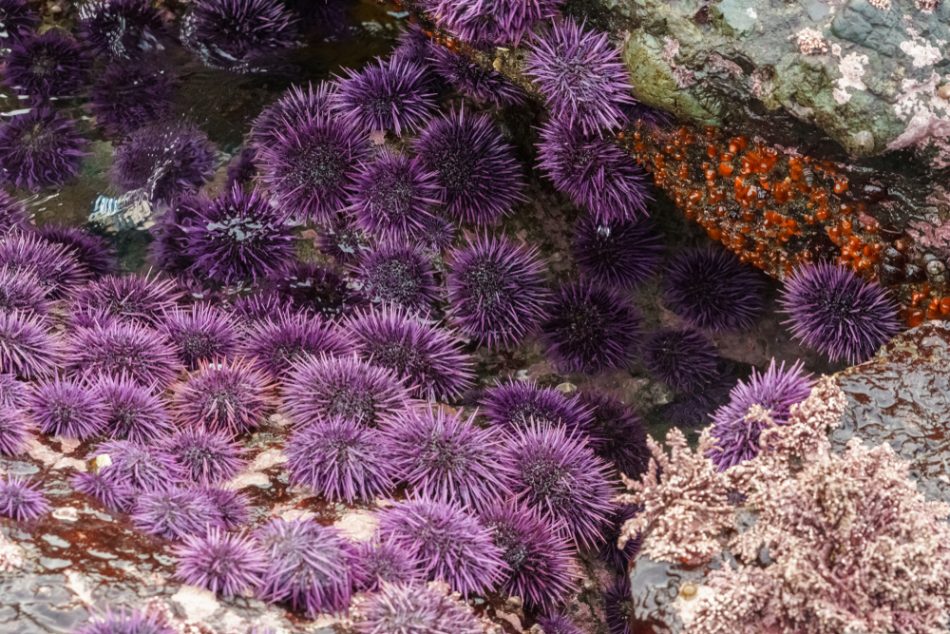If you dive under the waters of the Pacfic Ocean along the California coast, you’ll see the seafloor coated in small, spiny, purple creatures. These sea urchins are eating up local kelp forests at alarming rates, leaving behind a “purple carpet” wasteland in their wake. West coast divers are now looking at three primary strategies to deal with this crisis.
Solution #1: Collect the urchins
As commercial divers began to notice decreases in catch volume due to kelp bed habitat loss, they teamed up with Reef Check California to collect these urchins one by one. Volunteer divers headed out to fill nets with as many urchins as possible. The group targeted a particularly devastated area and, in one session, were able to clean an area the size of three football fields, collecting about 20,000 pounds of urchins. The urchins were then brought to a composting facility and another dive is scheduled for the near future to ensure the population doesn’t return.
Solution #2: Revitalize predator populations
Part of the reason urchin populations exploded in the first place was the decline of the sunflower sea star, urchins’ primary natural predator. These stars are now endangered, so researchers at the University of Washington have launched a captive breeding program in an attempt to reintroduce the species in the near future. Sea otters are another key urchin eater and, although populations are on the rise, the near decimation of the species for fur in the 1800s took a real toll on California sea otters. Conservationists are exploring the possibility of reintroducing the otters to places like the Bay Area where they were once native species. Learn more about those initiatives in this article from earlier this year.
Solution #3: Make use of humans as predators
The collected urchins in our first solution were composted, but urchin meat is also considered a delicacy. Found on many sushi menus, “uni” is the yellow reproductive organ of urchins. Although most restaurants serve uni from red urchins, seafood vendors on the California coast have begun tapping into the uni market as a way to not only find a use for the invasive urchins they clear, but also to make some money off their removal. Sea Stephanie Fish, a Santa Barbara company run by Stephanie Mutz, catches the urchins off the coast and raises them in a tank farm before selling them up and down the coast. And they’re incredibly popular. Mutz tells NPR that when she opened up a delivery site for customers in the Bay Area, she sold 300 urchins online in six minutes.
Unfortunately, it will take a large-scale ecosystem shift to actually make a dent in urchin populations and bring back kelp forests, but these solutions are a feasible small-scale intervention and are helping bring awareness to the crisis at hand. We will continue to follow the otter reintroduction strategy and bring you updates on this kelp help mission.











